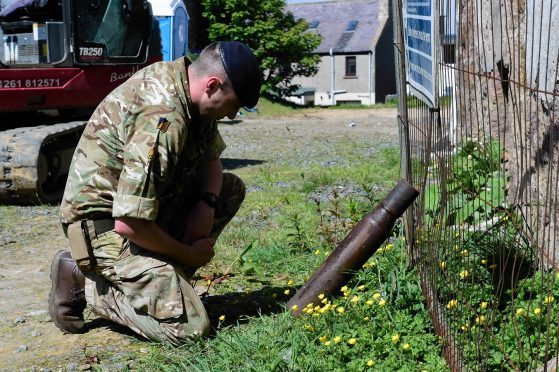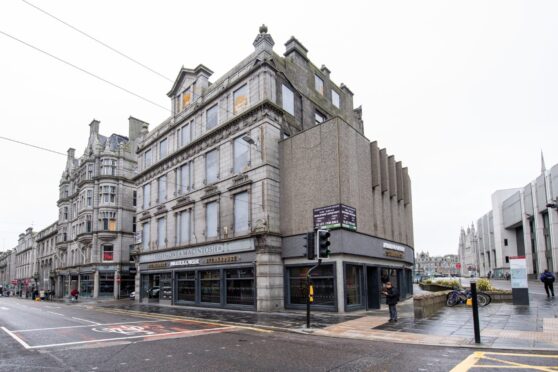Army experts made a 170-mile dash to a north-east port after a rusted gas canister sparked a bomb scare in a neighbourhood devastated during the Blitz.
Workmen at the former Caley Fisheries building in Peterhead’s Harbour Street area discovered the device while renovating the roof space of the warehouse.
Initially they were unconcerned by the find – then realised they had a potentially deadly device on their hands.
What was presumed to be an unexploded World War II shell was then isolated in nearby James Street and the bomb squad alerted.
A police officer stood guard the yard and a team from the Royal Logistics Corps was dispatched from Edinburgh.
The James Street area of Peterhead was levelled by bombers more than seven decades ago when the German Luftwaffe targeted the nearby harbour.
In one night in September 1941 as many as 30 people were killed during a raid, including 12 children.
Local councillor Alan Buchan, who was at the police cordon during yesterday’s incident, said it would not be surprisingly if workmen had unearthed an old shell in the neighbourhood.
“During the war they were bombing the harbour and flattened this block,” Mr Buchan said.
“That’s why these houses are newer. A lot of people were killed here.”
But the rusty tube proved to be nothing more than an old gas canister used in construction.
The 19th century Caley Fisheries building – which has lain derelict for decades – is now being transformed into a block of 15 flats by north-east developer Fulmor.
Last night, Fulmor partner, Rodger Morrison, said: “Back in time, James Street was bombed, there were a lot of deaths.
“Planes strafed right down along James Street and there were a lot of casualties.
“It wouldn’t have been a big surprise to me if it had been a bomb – I used to work with a lady who lost her brother in the bombing.”
Mr Morrison added that the construction crew who discovered the canister had only recently started work on the site.
A police spokeswoman confirmed the force had been called to the site following reports of a “device being uncovered”.
She said. “The explosive ordnance disposal also attended the scene, however following an investigation it was confirmed the device was not an explosive and no threat to public safety.
“The device will be disposed of accordingly.
“Police would like to thank members of the public for their patience while the situation was dealt with.”










